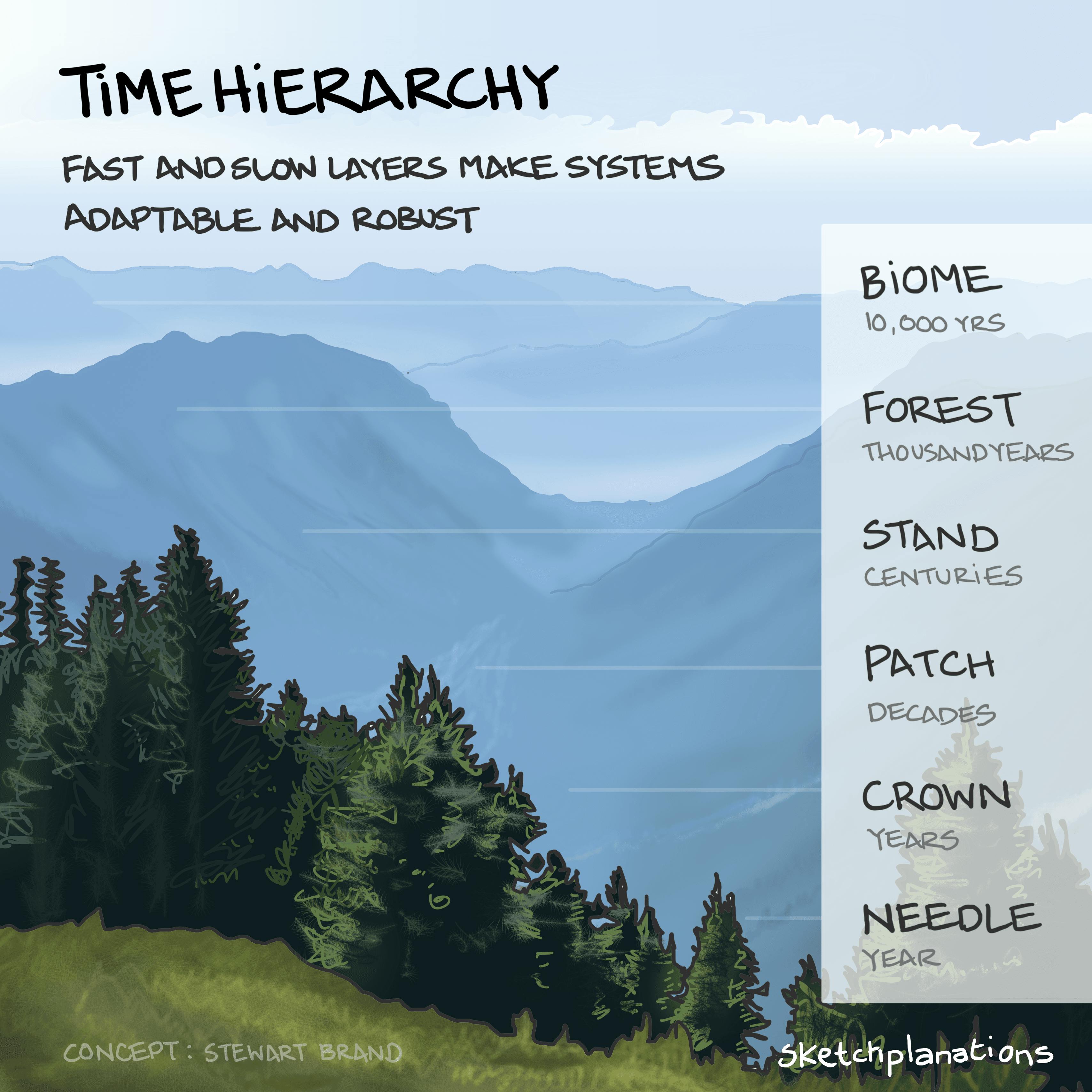Time hierarchy

- Prints
- Copied!
👇 Get new sketches each week
A time hierarchy example is how durable dynamic systems have elements, or layers, that change at different rates.
Just like for pace layers, the fast layers that change quickly provide innovation, while the slower layers stabilise and remember.
In his short article Pace Layering: How Complex Systems Learn and Keep Learning , Stewart Brand gives this evocative example of the time hierarchy of a coniferous forest:
"Take a coniferous forest. The hierarchy in scale of pine needle, tree crown, patch, stand, whole forest, and biome is also a time hierarchy. The needle changes within a year, the crown over several years, the patch over many decades, the stand over a couple of centuries, the forest over a thousand years, and the biome over ten thousand years. The range of what the needle may do is constrained by the crown, which is constrained by the patch and stand, which are controlled by the forest, which is controlled by the biome. Nevertheless, innovation percolates throughout the system via evolutionary competition among lineages of individual trees dealing with the stresses of crowding, parasites, predation, and weather. Occasionally, large shocks such as fire or disease or human predation can suddenly upset the whole system, sometimes all the way down to the biome level."
It's an example of his wonderful framework of pace layers, which he applies to the working structure of a robust and adaptable civilisation.

